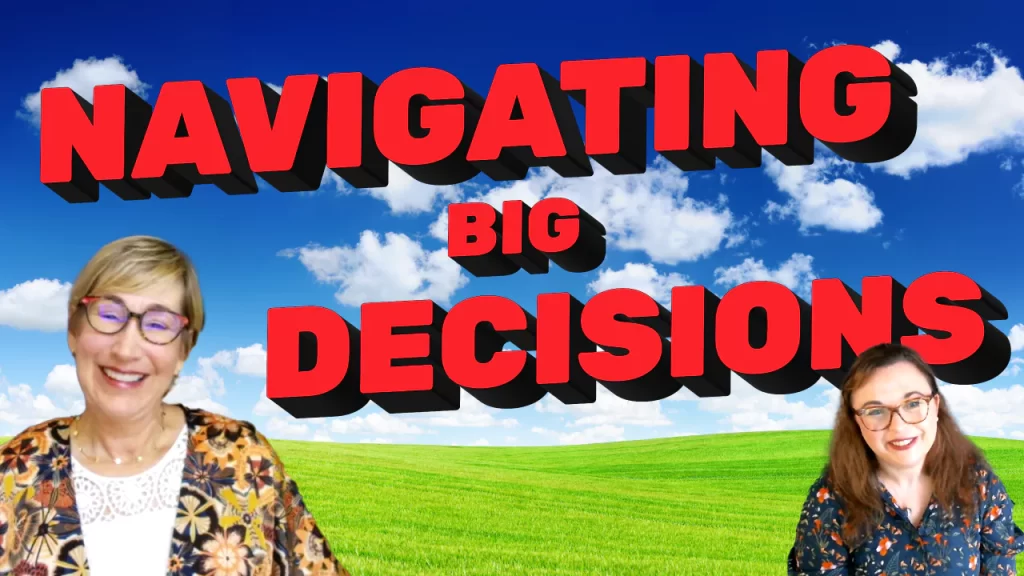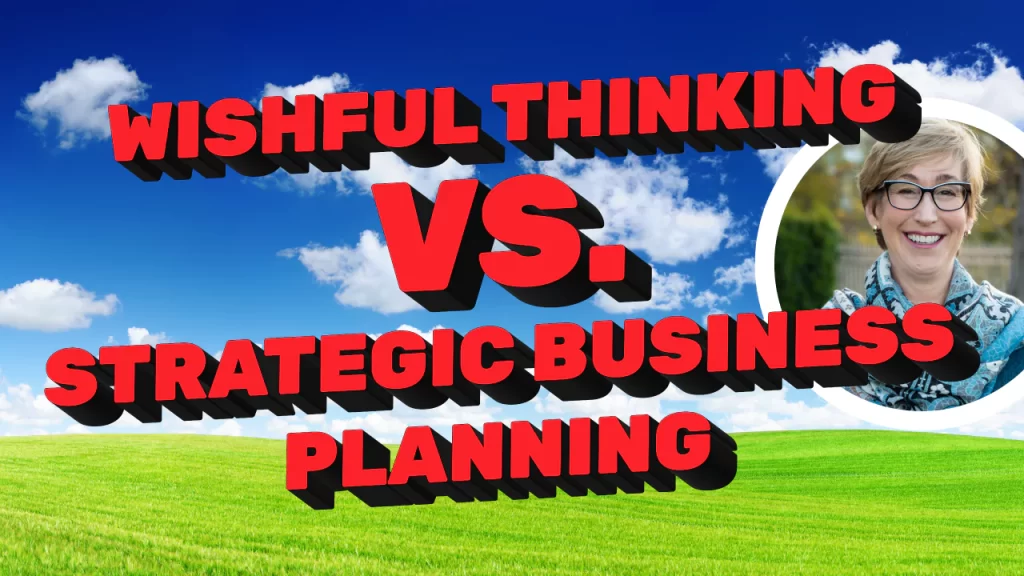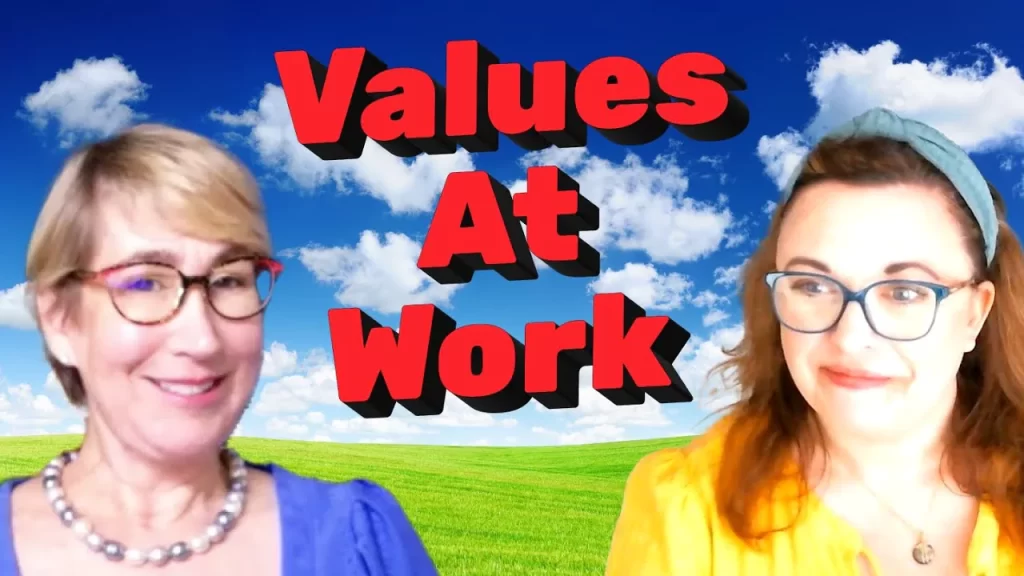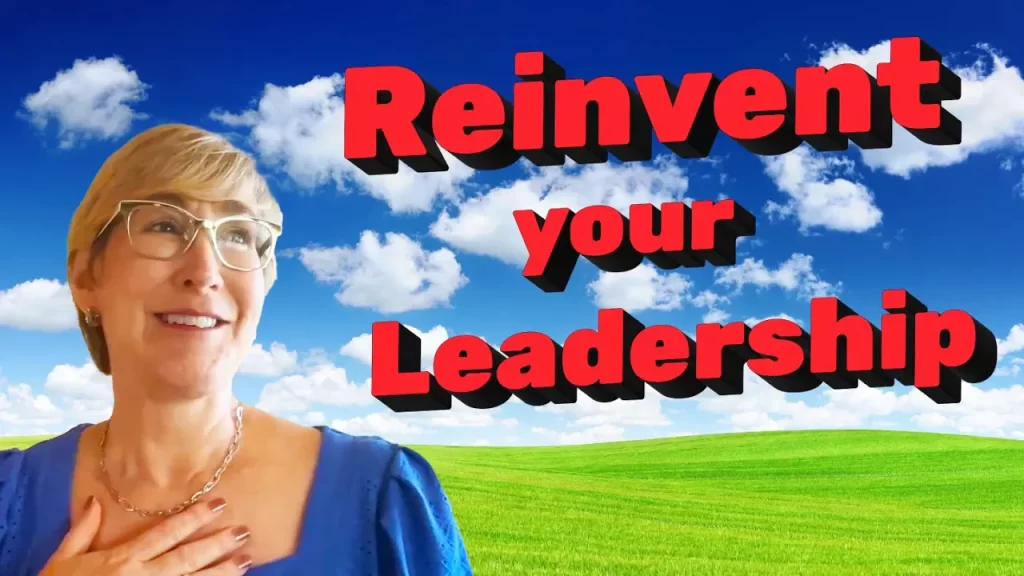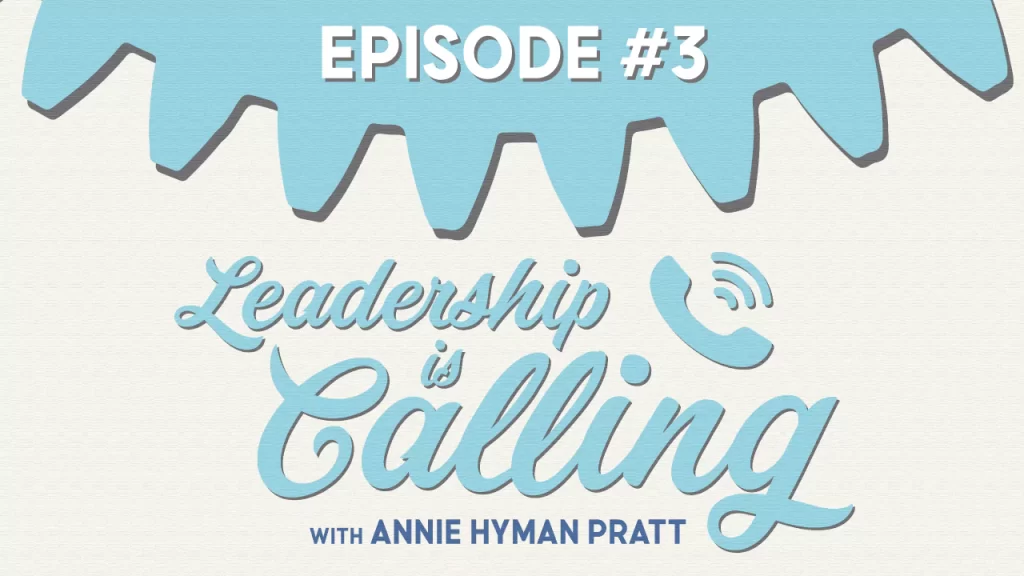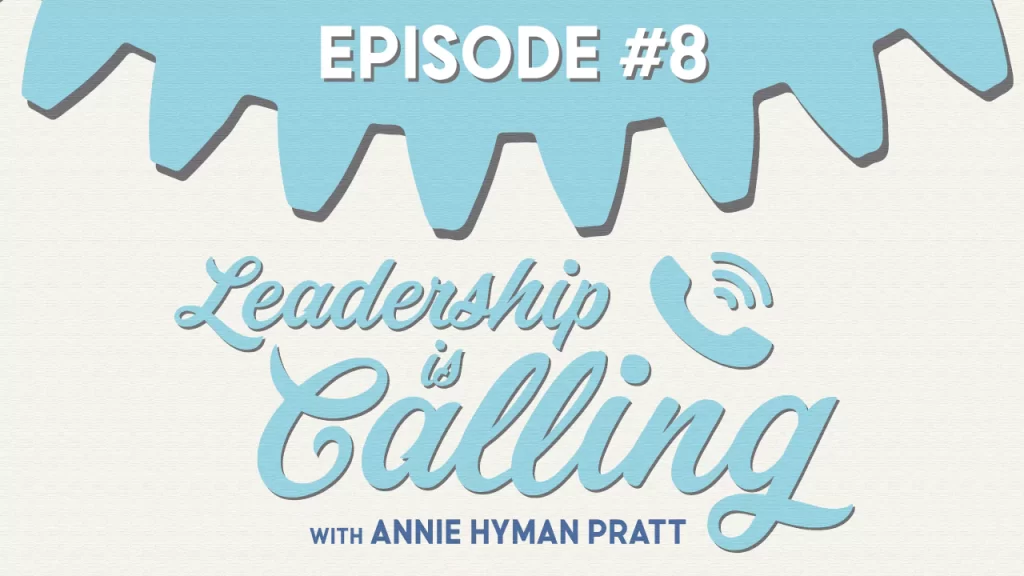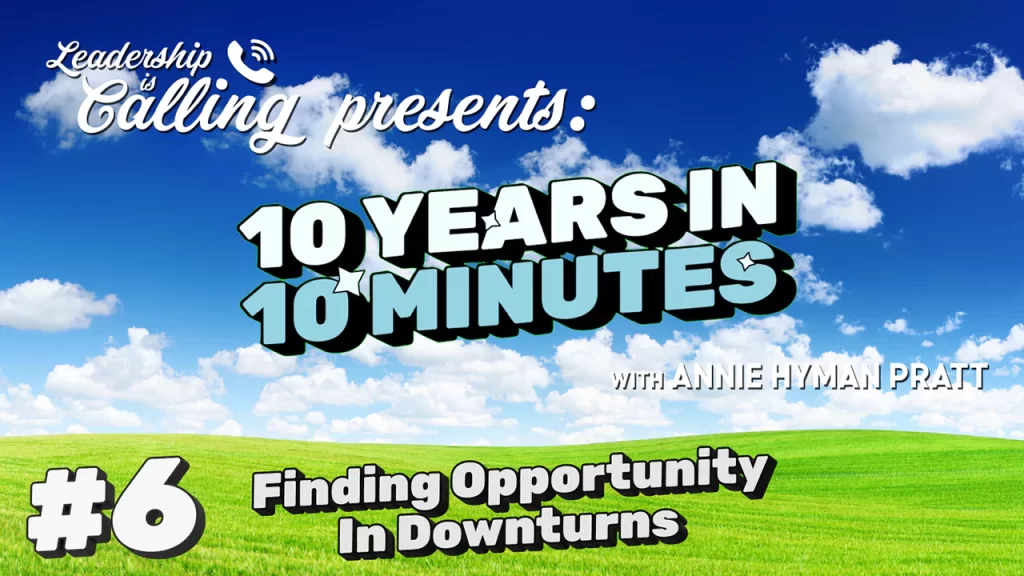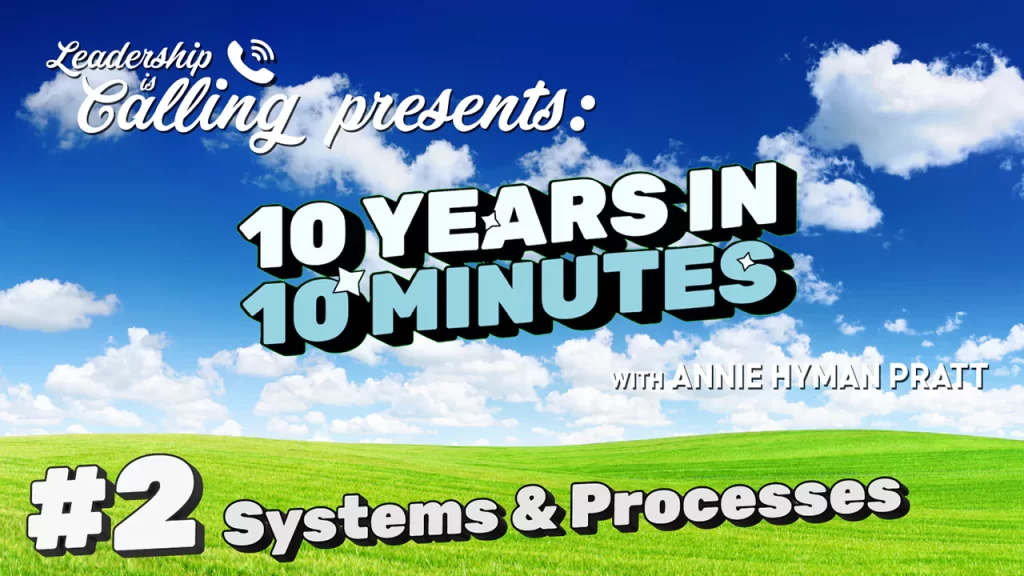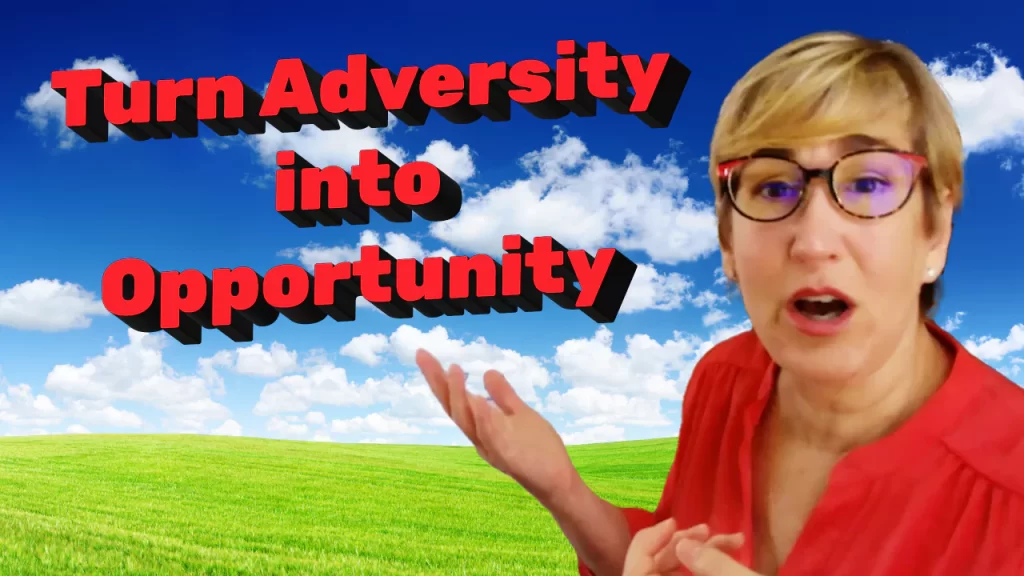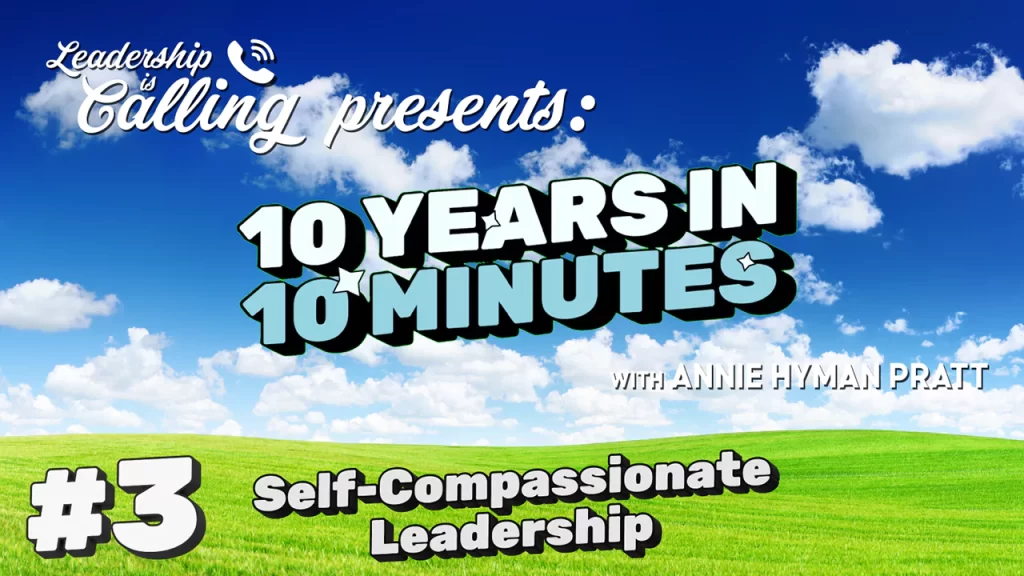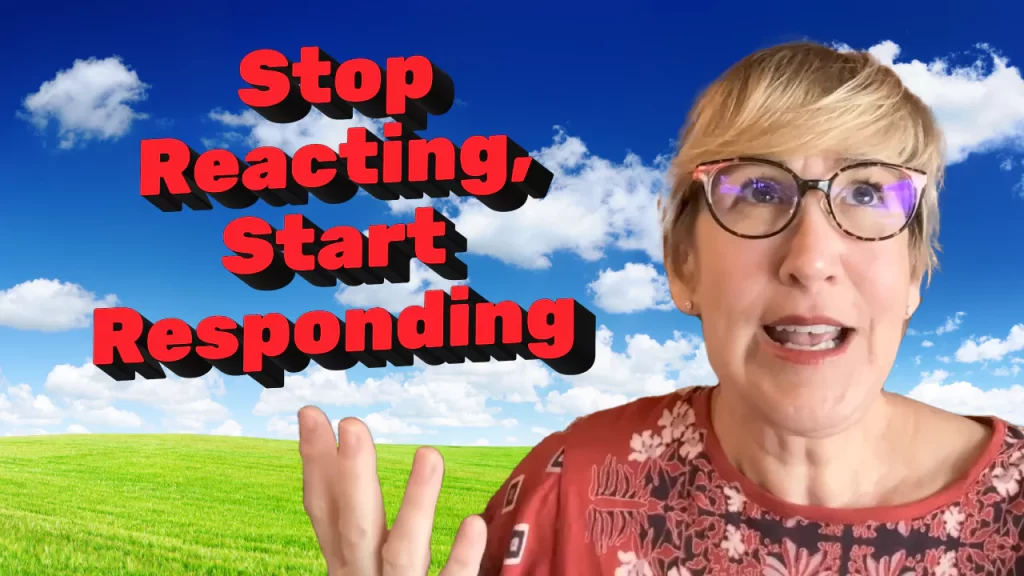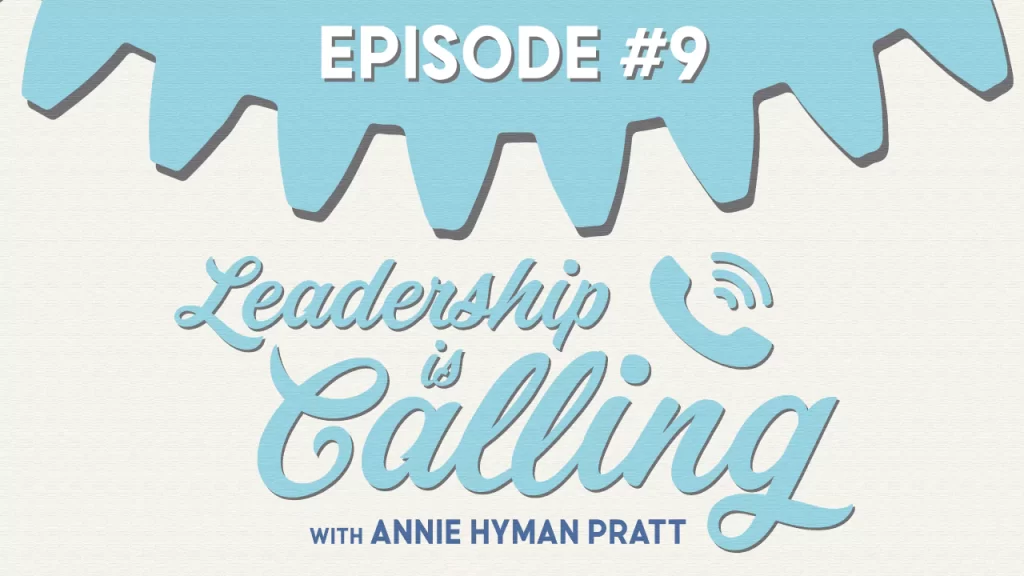Episode #01: Self-Leadership vs. Self-Protection
Leadership is Calling Episode #01
Annie Hyman Pratt
- Description
- Transcript
Self-Leadership vs. Self-Protection
“Learn how to spend more time in self-leadership and less time in self-protection, and you’ll be far more effective.” -Annie
Annie discusses the difference between self-leadership, where we make good decisions, and self-protection, where our emotions take over. It explains how our threat detection system can trigger unproductive reactions, and provides tips for recognizing these moments, pausing, and returning to a rational mindset.
Discover what happens when you…
- React in self-protection and are driven by your emotions at work (and all of your life)
- Understand how your fight, flight, freeze, please response affects your best thinking
- Can effectively recognize and notice your reactions and what to do instead
- Take the steps necessary to get back into Self-Leadership
Key Points
- There are two mindsets we can be in: self-leadership or self-protection. In self-leadership, we make good decisions. In self-protection, our emotions take over.
- Our threat detection system is overactive nowadays. It reacts to psychological threats even when there is no physical danger.
- When we feel threatened, we automatically go into “fight, flight, freeze or please” mode. Our emotions take over and we lose access to rational thinking.
- At work, we need people’s best thinking, not their knee-jerk emotional reactions. But it’s easy to get triggered into self-protection.
- Recognizing when we go into self-protection is the first step. Then we need to pause, change our state to calm down, and return to self-leadership.
- We should also resolve the trigger, so it doesn’t keep causing self-protection. Releasing judgment and having compassion is key.
- With practice, we can get better at catching ourselves in self-protection and re-centering in self-leadership more quickly.
- Choosing self-leadership over self-protection, especially at work, will make us vastly more productive and effective.
Related Resources
Leadership Skills: Self-Leadership
Leadership Development Articles: Getting Myself Back into Self-Leadership | Interrupt Your Emotional Reactions: Pause…
Downloadable Leadership Tool: The CCORE Empowerment Process

Auto-Generated Transcript – unedited version
Self-Leadership vs. Self-Protection
This is Leadership is Calling, a podcast that brings you leadership and business tips anchored in the people part. I’m Annie Hyman Pratt, CEO and founder of Leading Edge Teams.
So there really are two ways we can show up in any situation. We can show up either in self-leadership, where we make good decisions, where we do what we intend to do, where our thinking is really great. Or we can show up in self-protection, and self-protection is where we, all of our kind of thoughts and behaviors are run by our emotions. And that’s kind of the tricky thing about human beings – you know, we have these two modes of showing up in a situation. And we, we generally think that we, you know, that we show up the vast majority of the time in self-leadership, like when we think of, you know, sitting down to do some work or, showing up to, work with a team to, you know, get a project done or, or film a video series or anything like that. You know, we’re thinking that we’re definitely gonna show up and do what we intend to do. We’re going to use the best of our human abilities, all right?
But there is so, so, so much of the time, because we’re human, that we don’t show up that way – that we show up, in self-protection because as humans we are super hardwired to spot threats. And the way it works for humans to spot them without needing any thinking about it, we have this unconscious threat detecting machine going at all times. It’s based in our amygdala which sits right on top of our brain stem. And, and, what happens is as we take in information through our, you know, through sight, sound, touch, smell, all of it – as we take in information it automatically gets processed in our amygdala which is looking for “Is that a threat or not? Am I in trouble or not?”
And it evolved in a time where most of our threats were physical, kind of intermittent and physical. Today it’s something that is way overactive for how we live today, because today we don’t have all that many physical threats, at least not if you’re in a, you know, a first world country, of, of, you know, of any means at all. You’re, you’re generally not worried about starving today, right? Okay. Or getting attacked by a lion today. But what we are worried about is all kinds of psychological things. We’re worried about an argument we had with our spouse last night. We’re worried about saving money for our kids going to college. We’re worried about paying taxes. We’re worried about, you know, a parking ticket we got yesterday or a speeding ticket. We’re worried, we’re worried about so many things that we know could impact us.
And when we sense anything that could impact us, our system is designed to just fire up – to basically send us automatically into fight, flight, freeze or please. That’s how I think of these kinds of automatic responses. Fight or flight is the one that most people are kind of familiar with, but lots of people also do freeze or please – right, which is basically say anything you can to get them to de-escalate a situation. It doesn’t matter if it’s true or not, okay? So, because we have these, a very well tuned threat detection machine going, we easily go into self-protection. And self-protection is where we get obsessed with ourselves and not in a good way.
So meaning when I get upset about something, like let’s say I have an argument with my spouse and I’m really upset about a disagreement we’ve had over who’s going to do housework, all right? So the thing is that in that place my, my threat detection of like “Hey, I think my spouse is trying to get out of housework and is going to dump it all on me.” So when I’m feeling that way, and I’m driven by my emotions, I’m going to say all kinds of crazy things that aren’t effective at all. I’ll probably go into blame, criticism, judgment. I’ll tell them how, he never, you know, picks up his socks from the floor, how I’m always doing all the laundry, how I already, you know, do the dishes more than he does – whatever. I will go into a mode of, of, of automatic responses that hurt the situation. They don’t help it. They make it worse, not better. And that is a major problem for human beings today. And it comes up all the time, whether we’re at home, whether we’re at work, right? Whether we are, just out in the world.
And when we’re at work, which is what, I talk about the most – right, because this is, we teach all about the people part of business, leadership and team. And so I’m, when I’m talking about it at work, what we need from people at work is their best thinking, okay? And that means that they’re not run by their emotions. If I’m at work and I think my coworker has just thrown me under the bus in front of the whole team at a meeting, okay? I am no longer going to be thinking about the business outcomes. Now I’m going to be thinking about, oh my gosh, how do I get them back? Or how do I defend myself from what I think of as this criticism? Or, oh my gosh, I think I have to avoid that guy at all costs because he’ll throw me under the bus again.
And as I’m having those thoughts, that’s all self-protection. And it will lead me to behave in ways that are unproductive, that may have me move away from making good decisions, and have me stop thinking about what’s going to be best for the business here. It takes my decision making and it just takes it right, my perspective is totally skewed. Right? My, my how I see things is really clouded. And that is a giant issue for human beings today.
And for us to really recognize that when I show up in self-protection, or I should say when I get triggered into self-protection – and it might be a big trigger, you know, like I can really feel myself working hard not to blurt something out or, or I do blurt something out, right? Like, you know, when you can kind of feel that adrenaline going and you say and do stuff that you, you, you weren’t intending to do. In fact, if you could have thought about it you probably wouldn’t have. I think Will Smith at the Oscars is a perfect example of that, right? If he could have had better self-control in that moment he would have. That would not have been his first choice if he had been thinking about how this was going to go. But that’s the point with self-protection – you don’t think, it’s not a thinking kind of thing.
And so we want people to get really good at noticing when, for very first, just noticing, just recognizing when those thoughts and behaviors come up – when you’re in a self-protective kind of a triggered state – and to know at that moment you’ve lost access to your best thinking. You are no longer in self-leadership. You actually aren’t leading your thoughts and behaviors. You’re not, your emotions are driving those and they’re terrible drivers. We, we want this part of your brain to be driving. And that’s in self-leadership.
So the first way to get out of self-protection is the very first: recognize when it’s happening. So that when you know, when we feel that urge, we’re not, we’re not, oblivious to the fact that we are in a self-protective place, that we’re not in an effective place. If we can at least recognize that, we have the chance of getting ourselves back and, and not doing the automatic things that are destructive – that end up being self-destructive, frankly. I mean, can be destructive to all kinds of, you know, relationships and situations, but also end up being very self-destructive.
So by recognizing it we have a chance at getting back to self-leadership. So that is the very first thing.
The second thing that gives us an extra, extra chance of getting back to a good place is to learn how to pause when those feelings hit – right? To recognize “Whoa, I’m in self-protection. I feel like, you know, pounding my keyboard to answer this email and, you know, and get real snarky and make my best, you know, my best get my best, sarcastic remarks in there, okay?” And, I know you guys know that feeling. It’s like, you know, like you’re, you’re gonna attack the keyboard.
And, before you do that to recognize “Hey, look, that’s coming from a place that actually is not going to be helpful.” And if I could pause, if I could just take a moment and not attack my keyboard, take a real pause, stand up, move away from the keyboard, right? And get yourself a cup of coffee, pause, go play with your dog for a moment, take a walk around the block – like changing your state, the energy in your body. We want that to change. And so that’s why we say “Change your state.” You’re not going to be able to change your state if you are pounding on your keyboard and those thoughts are driving, right? You are thinking about “What’s my next, you know, what’s my next comment? How can I, you know, how can I make this person regret sending me that email?” That will only style things up and make it even worse.
So we want you to be able to pause, to pause, get your emotions regulated more. And that means, you know, changing your state. And those two things are the most important thing in self-leadership and getting yourself back to self-leadership.
Now the third thing is to resolve the trigger that got you into self-protection in the first place. So that when you encounter that trigger again, like the next time I get a snarky email, I don’t automatically go into self-protection because it’s time consuming. It’s like it, it makes me have to exert a lot of energy to get myself back to self-leadership. And that on its own is, you know, a big waste and, and just takes up unnecessary energy, right?
So to do that we want to resolve what triggered us in the first place. We have a process for that called the CCORE Process. And I’m not going to teach that today or I’m not going to teach it right now in this video. but it is super important. And I will say that the most key, key part in it is to release your judgments and get to a place of compassion.
And why I’m saying that here is because the thing about being human that we can start with right away is that we all have these experiences, like we all get triggered. We, there, you know, if, if you haven’t had a time where your emotions were driving you, you, you know, I don’t, you’re, you’re either a complete sociopath or a robot. And I, you know, and I don’t know either happening in the human population today. So just to recognize, man, we are human. We have these automatic emotions that take over sometimes. And we have to learn how to work with those. And it’s not all that different from having to learn how to do other things by practicing over and over, right?
We have to learn how to drive. Now take some practice. Nobody knows how to do it on minute one, right? We have to learn how to read. We have to learn how to write. We have to learn how to do math. And, I wish this is something we were taught in grade school, like early, early on. But we have to learn how our emotions work and how they drive us so that we can regulate them so that we aren’t affected anytime they want to just show up, right? It’s, it’s, our lives are so much better when we don’t spend them, in an emotionally reactive place there. And by the way, it’s not just that we kind of lose a little bit of our executive function. It’s like we lose almost all of it. The more upset we are, the less control we have over anything. It’s only going to be reactive. And when we’re in that place our blood actually leaves our frontal lobe and it goes to our big muscles primarily our thighs so we could fight or flee. And we don’t want the blood there, we want it here.
So, you know, so really starting with again just starting your whole leadership journey with “I’m going to learn how to spend more time on self-leadership and less time and self-protection.” That is the best, best place to start because then no matter what you’re doing you’ll be, you know, 50 times, 100 times more effective.
and if you’re not sure if that’s true, if you’re, you know, if you’re thinking “Well, maybe I’m the one that can be upset and I still have really good decision-making power.” Like, you know, like asking your spouse how that really works. Discuss your best friend. Ask somebody who knows you how good your thinking and your performance, your productivity is when you’re not in a good place. It’s just, you know, you’re human just like everybody else.
So, now that, you know, now that you’ve learned a little bit about how this really works for humans, you do have a choice. You do have a choice. You know, you may not have a choice the very first time when you react to emotions that you have a choice to learn how to recognize when you’re going into self-protection and how to pause at that time and get yourself back to self-leadership.
Be sure to like, comment, and subscribe to Leadership is Calling.
To learn more about this episode’s topic pick up a copy of my book The People Part.
Want to learn more about how to uplevel your leadership skills and create a collaborative team that helps you drive results go to leadingedgeteams.com/schedule to learn more about working with us and to schedule a call.

